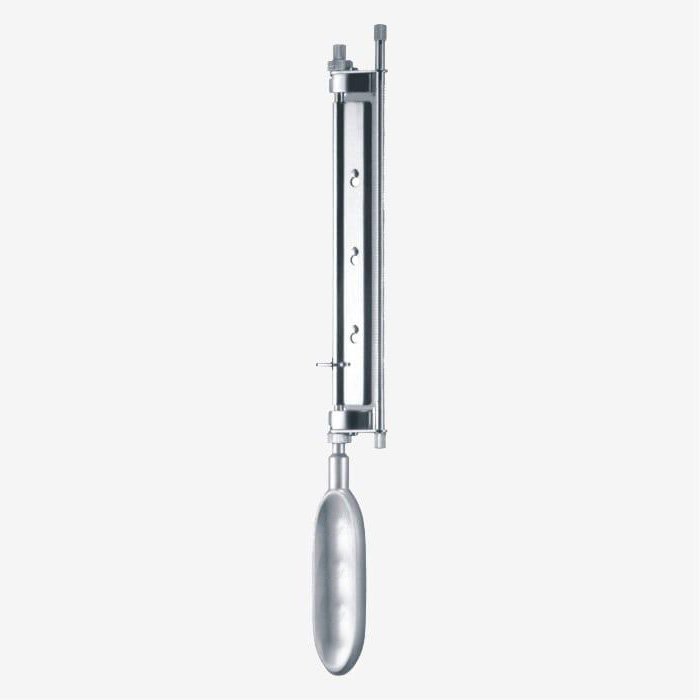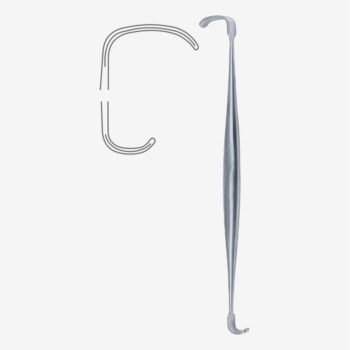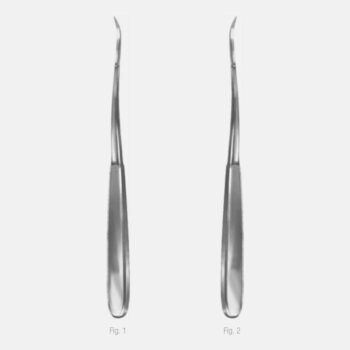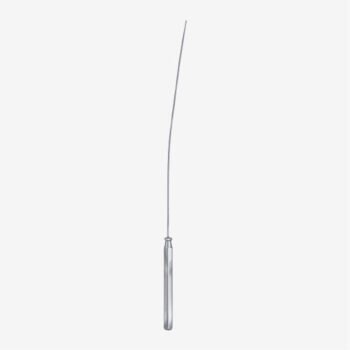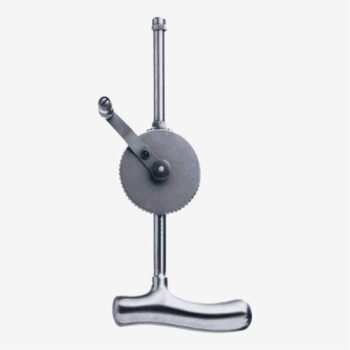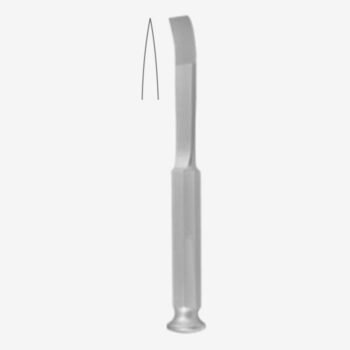The Humby – Braithwaite Dermatome (Skin Graft Knife) is used to collect a slice of healthy skin from donor site to perform a skin graft on a site with tissue loss. Donor sites for the harvest of skin graft include the lumbar and gluteal regions (thick skin), the thighs, and the arms (thin skin). The thigh is generally the usual donor site for smaller quantities of graft.
HISTORICAL INSIGHT
The first widely used instrument permitting depth control was that developed by Graham Humby in England who was working at the Hospital for Sick Children, Great Ormonde Street, London, prior to World War II when he was a junior dresser to Sir Heneage Ogilvie. Humby added a roller to the Blair knife. The distance between the roller and the blade of the knife could be varied by means of a calibration device.
Braithwaite Fenton in 1955 introduced a new model combining modifications so that the instrument need not be dismantled to replace the blade. Adjustment between the roller and the blade was achieved by two knurled collars mounted on the back of the knife. The blade was of the wafer razor type and was locked securely in the leaf spring holder. To fit a new blade, it was necessary to move a safety catch, open the leaf and insert the blade under the roller, and replace the safety catch. The knife without the blade could be sterilised by boiling without the risk for damage, and no protective cover was necessary for sterilisation or storage.
When cutting thin split skin grafts, however, with the Braithwaite knife there is a tendency for the skin to roll up round the guard, and although this can be corrected by an assistant’s traction on the cut skin, this manoeuvre is liable to tear the sheet of skin or cause the knife to cut out. Moreover, the roller must slide to and fro along its long axis, necessitating slack end-bearings that reduce precision in the setting; hence, the graft sometimes becomes gradually thicker as the knife progresses. Usually, two adjustments are necessary at either end of the knife to set the depths of cut; if these are set unequally, the graft will be thicker at one side than the other.
To remedy these disadvantages, Watson John in 1960 produced a knife with a fixed, polished, stainless-steel guard and a simpler, more rigid thickness adjustment.
REFERENCES: Ameer F, Singh AK, Kumar S. Evolution of instruments for harvest of the skin grafts. Indian J Plast Surg 2013;46:28-35.
| Author Name |
Humby |
|---|---|
| Specialty |
Orthopedic, Plastic Surgery, Skin Grafting |
| Sub-Category |
Skin Graft Knives |
| Category |
Knives, Needles & Picks |
| Handle Type |
Hollow Handle |
| Overall Length |
32 cm – 13″ |
| Finish |
Satin |
| Material |
Stainless Steel |
| CE Marking |
Yes |
| Reusable |
Yes |
| Used in Specialties: |
Orthopedic Plastic Surgery Skin Grafting |
|---|---|
| Product Category: | Knives, Needles & Picks |
| Product Type: | Skin Graft Knives |
